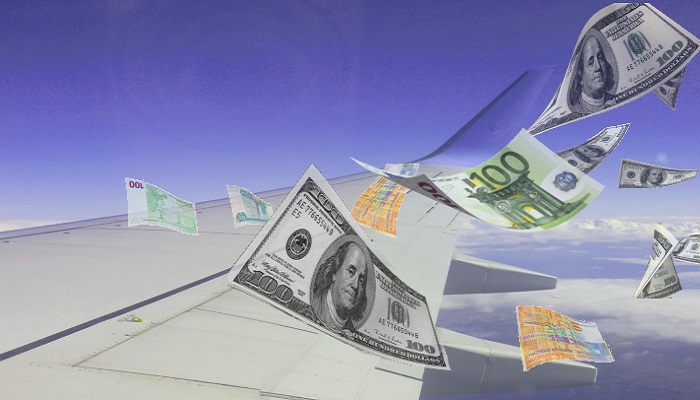HOW ROUTE PROFITS FOOL AIRLINES
|

|
Aviation is a high capital industry and professionals around the world spend the best of their time to post profits.
Given the stakes, itís astonishing how many airlines still rely on traditional Route- or Flight Profit & Loss Statements to support this work.
|
This while there are numerous practical examples where such P&Lís simply point in the wrong direction. A positive or negative result does not always mean that the route has the corresponding effect on company profits. Quite regularly the opposite is true and many network experts know it.
WHERE ROUTE P&Lís GO WRONG
The main problem with Route P&Lís is that they build on assumptions that do not correspond with any reality.
A good example is revenue pro-rating for online connecting traffic. Unlike for inter-lining, online this has no equivalent in real life. The connecting flow will either be there for 100%, or it will not be there (0%). It canít be there on only one of the sectors that form the connection.
Airline networks are full of such non-linearities. Think of how substantial costs, like crew, maintenance, fleet or overheads are allocated by block hours, or handling costs per flight. In practice, such assumption can be factors off.
Calculations with discrepancies like that, cannot serve as solid basis for important decisions.
Another problem with route P&Lís is that they poorly handle fundamental differences between flights. Essential characteristics like opportunity costs (top- versus rest-capacity), consistency (seasonal flights), uncertainty (charter flights) or the benefits of optimization compromises are not reflected.
CAUSE OF ADVERSE DECISIONS
The consequences are serious. People involved in network decisions get the wrong information about the value of flights, or the implications of their decisions.
Higher in the organization, management will get a wrong sense of priorities. A lot of network professionals will confirm how much of their energy is absorbed by initiatives that contrast with their intuition.
This is not just a technical or gradual matter. Adverse planning decisions can bring airlines in a negative spiral, for example when the figures wrongly suggest that cutting production will reduce losses.
History is filled with cases where this only created more routes with negative results, spurring new rounds of emergency measures; a vicious circle with fatal effects.
THE PRICE OF SIMPLIFICATION
Of course it's an understandable desire to see an airline network in a modular way, where flights can be cut and pasted to optimize results. So is the sense that each flight should carry a fair share in covering the costs.
Yet, it's a misunderstanding that routes or flights are the sole building stones of an airline network. There are other important drivers of costs and commercial impact.
In the end, the only thing that really counts is the profitability of the entire network.
NO ALTERNATIVE ?
As stated, for many airline professionals this issue is not new.
The problem is that the alternative Ėif known- requires adjustments in financial reportings and takes more network insight to use.
That, together with soothing arguments like ďtheyíre not always wrongĒ or ďitís an indication, better than nothingĒ, maintain the status quo.
None of these reasons should sustain. In this digital age, itís simply not acceptable that the math does not accurately support optimization purposes.
We wouldnít want a brain surgeon to work with a hammer, so neither should network optimizers need to cope with Route P&Lís.
back to top
